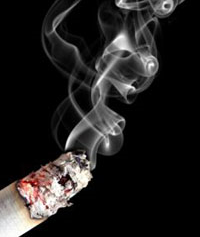Smoking Increases Risk of ER-Positive Breast Cancer
A new study found that smoking increases the risk of estrogen receptor (ER)-positive breast cancer for young women.
A 10 pack-year history of smoking was associated with an increased risk of ER-positive breast cancer

A 10 pack-year history of smoking significantly increases the risk of estrogen receptor (ER)-positive breast cancer for young women. ER-positive breast cancer is the most common form of breast cancer. The study, published in the journal Cancer, shows that women between the ages of 20 and 44 who have a significant history of smoking have a 60% higher chance of being diagnosed with ER-positive breast cancer compared with their non-smoking counterparts. The study was conducted by Christopher Li, MD, PhD, of the Fred Hutchinson Cancer Research Center in Seattle, and colleagues.
Smokers were more likely to develop ER-positive breast cancer, with no increase in risk seen for triple-negative breast cancer.
Those women who were current smokers or had smoked for 15 years or more were 50% more likely to be diagnosed with ER-positive breast cancer than women who had no history of smoking or had smoked for fewer than 15 years.
Younger women who had any history of smoking had a 30% increased risk of developing any of the breast cancer subtypes compared with their counterparts who had no history of smoking.
The current study is the first to examine the risk of smoking for each subtype of breast cancer.
“Although this association was modest, the findings suggest that an increased risk of ER-positive breast cancer may be another health risk incurred by young women who smoke,” concluded the authors.
While some previous epidemiological studies have shown a correlation between smoking and a higher risk of breast cancers, others have not. Seven of 10 large studies since 2002 suggested a positive correlation between premenopausal breast cancer and smoking. A 2011 review estimates that the risk of premenopausal breast cancer for women who are current smokers is 15% to 40% higher compared with women of the same age who have no smoking history.
The population-based, case-control study enrolled 778 women with ER-positive breast cancer and 182 women with triple-negative invasive breast cancer, who were between the ages of 20 and 44 and who were diagnosed between 2004 and 2010 in the Seattle area. The control group included 938 women who did not have cancer.
The results highlight that breast cancer is not one type of disease and risk factors for the various breast cancer subtypes differ, as does the natural history of these subtypes.
The authors speculated that the link between smoking and ER-positive disease may be due to the estrogen effects of smoking. Carcinogens found in cigarettes and metabolites of carcinogens can be detected in the breast tissue and fluid of smokers, according to studies. Further studies are needed to understand the biological mechanism of how cigarette smoke could influence ER pathways.